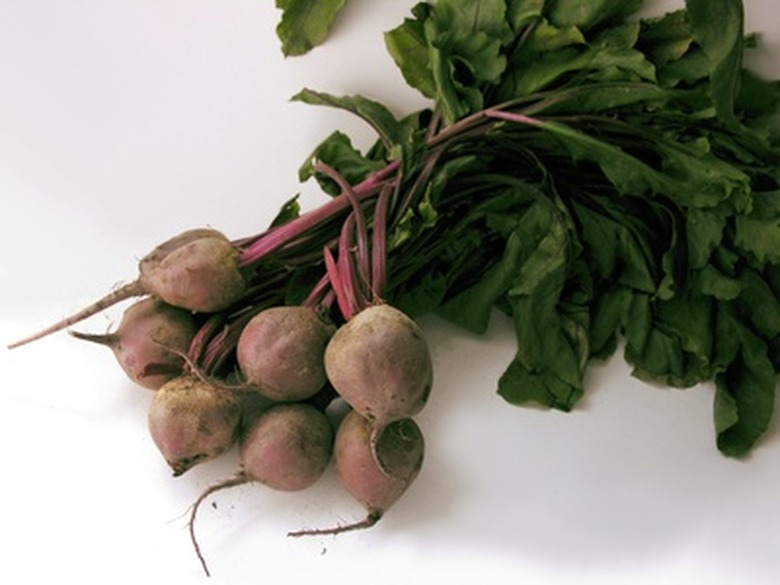Planting In July In Michigan
Things Needed
- pH test kit
- Shovel
- Sulfur (optional)
- Lime (optional)
- Compost
- Manure
- Rake
- Vegetable transplants
- 8-8-8 fertilizer
In July, Michigan gardeners switch over from summer's garden of tomatoes, corn and zucchini to fall garden staples like lettuce, turnips and beets. As the hot weather cools and days become more temperate (and nights chilly), cool weather crops thrive. Growing backyard vegetables cuts down on food costs and provides an excellent source of fresh produce. Purchase vegetable transplants from garden centers or farmers' markets or buy seeds. Preparing a new garden bed for planting takes time, but planting the vegetables is simple.
Step 1
Test the soil pH in your garden using a home test kit, which requires you to collect a soil sample, moisten it and touch a color change strip to the soil to read the pH value.
Step 2
Consult The Garden Helper's list of soil pH suitable for growing vegetables (see Resources). Amend your garden's pH by using sulfur to lower it or lime to raise it, again using The Garden Helper's recommendations based upon the type of soil in your garden (see Resources).
- In July, Michigan gardeners switch over from summer's garden of tomatoes, corn and zucchini to fall garden staples like lettuce, turnips and beets.
- Consult The Garden Helper's list of soil pH suitable for growing vegetables (see Resources).
Step 3
Prepare the soil in the garden bed by turning it over with a shovel to aerate it. Dig down 12 inches and lift the soil up then turn it over. Break apart soil clods and remove rocks, sticks and weeds. These things get in the way of vegetable roots.
Step 4
Lay 2 inches of compost or manure across the garden bed to enrich the soil's nutrient content. Work this organic material into the ground, turning it over into the top 6 inches of soil.
Step 5
Rake your garden bed so it's flat again. Planting in a bed that has hills or valleys causes uneven water drainage.
- Prepare the soil in the garden bed by turning it over with a shovel to aerate it.
Step 6
Dig holes for your vegetable plants or for your seeds, following the recommended spacing guideline on your transplants (each should have a plant tag with spacing information; seeds have this information on the packet). Make each hole twice as wide as the transplant Most plants prefer full sun, although lettuces and greens can grow in part shade.
Step 7
Set one plant in each hole so it sits at the same depth as it did in its container. Firm the soil around the base of the seedling to plant it. Plant all vegetables in this manner.
Sow seeds in the prepared holes then fill in the hole with soil to plant the seeds.
Step 8
Mix 3 to 4 tbsp. of 8-8-8 fertilizer in 1 gallon of water. Water the vegetable plants with this mixture until the ground becomes saturated with water. Mix additional batches of fertilizer as needed until all plants have sufficient water.
- Dig holes for your vegetable plants or for your seeds, following the recommended spacing guideline on your transplants (each should have a plant tag with spacing information; seeds have this information on the packet).
- Mix additional batches of fertilizer as needed until all plants have sufficient water.
Tip
Sow plants either from vegetable transplants or from seed.
